What is Laser Cutting and How Does it Work on Sheet Metal?
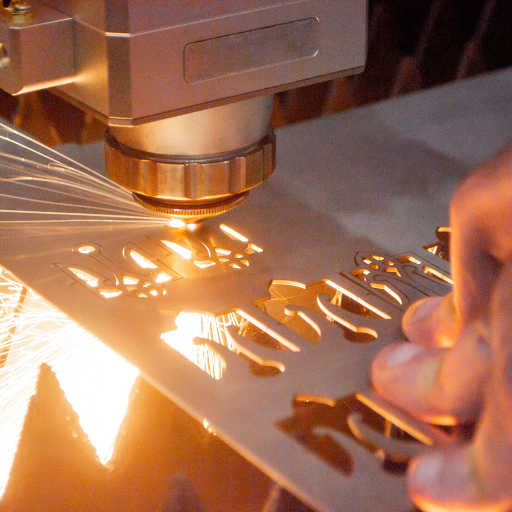
Understanding the Basics of Laser Cutting
Laser Beam Interaction with Sheet Metal
The Role of CNC Machines in Laser Cutting
What are the Advantages of Using a Metal Laser Cutter?
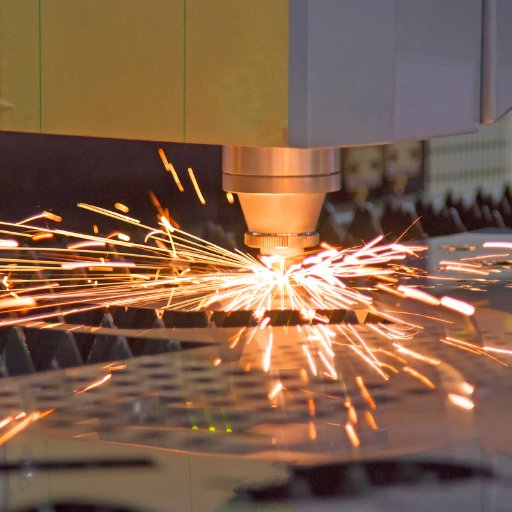
Precision and Tolerance in Metal Cutting
Versatility in Cutting Various Types of Metal
In handling a variety of metals with their own specific characteristics and uses, laser cutting technology is renowned for its exceptional versatility. Manufacturers can therefore work with different materials including stainless steel, carbon steel, aluminum, copper and brass among others. Stainless steel and carbon steel are the most commonly cut metals due to their strength and wide range of industrial applications. Aluminum on the other hand is also largely cut with lasers because it’s lightweight and resistant to corrosion so it is used in aerospace as well as automotive industries. Copper and brass have high thermal conductivity as well as electrical conductivity hence widely used in electrical applications which require precision cuts on softer metals.
Laser cutter can handle a variety of metal thicknesses ranging from very thin sheets to much thicker plates with remarkable accuracy and repeatability. This capability is mainly attributed to the fact that the laser can be finely adjusted by power or speed settings dictated by the type and thickness of metal being processed. Laser cutting does not come into contact with material thus it does not distort or damage delicate features making it useful for these types of intricate designs. That’s why this capability renders laser cutting invaluable in a variety of industry sectors such as heavy duty manufacturing or miniaturized electronics.
Speed and Efficiency of Laser Cutters
Laser cutters are known for their speed and efficiency, making them a popular choice in modern manufacturing. The fast-moving laser beams employed by these devices result in materials being cut within a short time frame hence leading to shorter run intervals. This velocity does not mean that the precision of cuts is reduced since laser cutters always give out exact reductions with negligible margins of errors thus providing commendable outcomes.
Moreover, the effectiveness of laser cutting machines is enhanced by the fact that they can be programmed to cut automatically thus minimizing the need for intervention, reducing labor costs and human errors. Furthermore, laser systems have high efficacy regarding material use as they produce smooth cuts which result in less waste. This issue is significant especially for industries with a focus on optimizing resource usage as well as minimizing production expenses.
Generally speaking, high speeds combined with precision along automatic processes plus material efficiency make this equipment essential in several industrial applications which increase productivity and quality control.
Which Types of Laser Cutters are Ideal for Metal Fabrication?
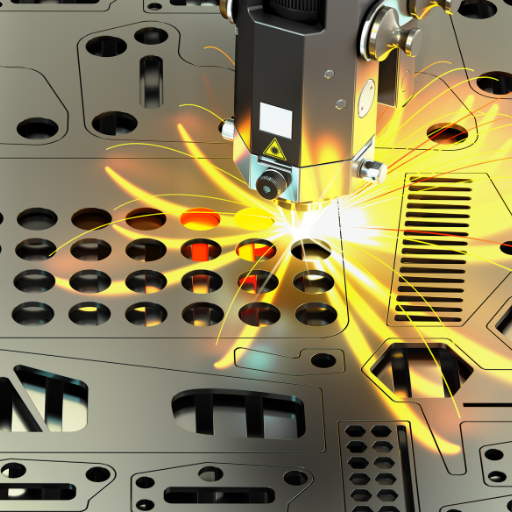
Fiber Laser vs. CO2 Laser Cutters
There are some primary differences when Fiber Laser Cutters and CO2 Laser Cutters for metal fabrication are compared based on the information from top sources:
- Efficiency and Speed: Fiber lasers have higher beam quality, making them more energy efficient and suitable for working with thin materials, hence these lasers cut faster than CO2. This aspect makes the fiber laser more appropriate for a situation that requires high product volumes.
- Material Versatility: The range of materials that can be cut using CO2 lasers is broad; fiber laser technology is best suited to cutting metals whereas other materials like wood, acrylic or glass are more efficiently worked on using CO2 lasers.
- Operating Costs: Operating costs of fiber lasers vis-a-vis those of CO2 lasers tend to be lower. Fiber has fewer consumables and parts needing replacement which also means less downtime thus reducing long-term expenses.
Choosing the Right Machine for Stainless Steel and Carbon Steel
To get the best results, it is critical to select the appropriate machine for cutting stainless steel and carbon steel. Here are the key insights we have gathered from top Google sources:
- Cutting Speed and Efficiency: They generally prefer fiber laser cutters for both stainless steel and carbon steel because it has fast cutting speeds with high efficiency this metals materials that has been processed in large quantities where precise and consistent quality cuts are required.
- Thickness Capabilities: CO2 lasers may be more advantageous for thicker materials. While they are slightly slower in comparison to fiber lasers when it comes to thinner materials, nonetheless they can make extremely accurate cuts through thicker cross-sections of stainless steels or carbon steels.
- Cost Efficiency: In general, fiber lasers tend to have lower operating and maintenance costs, making them more cost-effective for continuous long-term application. Energy efficiency has long term financial benefits important for industrial applications.
- Quality of Cut: Either type of laser delivers an excellent cut quality, but when it comes to thin sheets of stainless steel and carbon steel with finer details and smoother edges then fiber lasers have better advantage.
Considerations for Selecting a Laser Cutting Machine
Therefore, it is important to make certain considerations in order that the chosen machine can meet the specific needs of your fabrication tasks.
- Material Type and Thickness: Different laser cutters are good at cutting different materials and thicknesses. Fiber lasers are usually said to be efficient for thin metal such as stainless steel and aluminum while CO2 lasers would be more preferred for thicker materials including non-metals. Determine which type of laser cutter is appropriate based on the materials you often work with.
- Cutting Speed and Precision: Speed and accuracy are essential particularly in high volume manufacturing settings. Fast cutting speeds and superior precision for thin metals characterize fiber lasers making them suitable for intricate designs and finer details. Choose a machine that can keep up with high-quality cuts demands while maintaining your production needs.
- Operational Costs and Maintenance: Consider long-term operating as well as maintenance costs of the laser cutting machine. This has to do with energy efficiency in fiber lasers thus less cost of operation as well as maintenance requirement reductions. Such savings may become substantial over time thereby making them more economical options for consistent running.
- Flexibility and Versatility: You should ensure that the machine you choose is capable of handling various tasks such as cutting various materials or types of cuts. Additionally, some laser cutters have extra features like engraving or marking that can add value to your operations.
- Software and Automation: The software coming with the machine must also be considered especially if it works compatibly with other existing systems within an organization when it comes to automation processes around this line. More precisions can be achieved by using advanced software which optimizes all desired cutting paths even leading into total process automation hence adding up efficiencies in total by reducing lags through minimized errors.
How to Optimize the Laser Cutting Process for Sheet Metal?
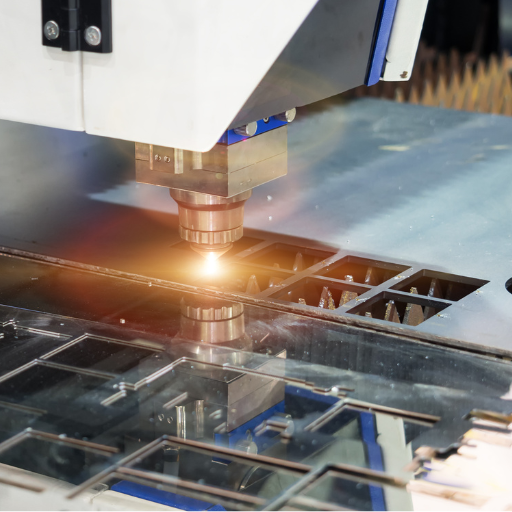
- Material Selection: Choose the appropriate type and quality of metal sheets according to your needs. Making use of clean, high-quality metals lowers chances for errors and allows for accurate cuts.
- Machine Calibration: Ensure that your laser cutting machine is calibrated correctly. Regular maintenance and calibration help in improving the precision of the cutting process as well as the performance of the machine.
- Focus and Speed Settings: Adjust the laser’s focus and its speed by considering material type in addition to thickness. These settings result in untidy cuts, which create waste materials.
- Assist Gas: Employ proper assistance gases like oxygen or nitrogen during cutting optimization. The selected gas affects both cutting speed and cut edge quality.
- Nesting Techniques: Implement effective nesting techniques that reduce material wastage. Mapping out parts on sheet metal properly can ultimately save you some costs for materials while also lowering down time for cutting purposes.
- Software Utilization: Use latest software developments to take charge when it comes to guiding lasers in cutting steel. It is ultra-modern software that assists process optimization through path generation, cycle time reduction among others that support a drop in overall quality levels.
- Cooling Systems: Make sure you have efficient cooling systems which control temperature increase. Proper cooling ensures long life span of your laser cutter besides repeated services with accuracy.
Best Practices for Reducing Thickness Variation
- Consistent Material Supply: It is imperative to obtain sheet metal from trusted vendors with stringent quality control measures. Uniformity in material characteristics is essential to minimize thickness variations.
- Regular Calibration: You have to frequently calibrate and maintain your processing equipment, it will significantly reduce the change of different thicknesses due to precision instruments if calibrated correctly.
- Proper Roll Alignment: In this case for example rolling, see that rolls are rightly aligned and balanced. Inappropriately aligned rolls can lead to uneven sheet metal thickness.
- Controlled Environment: Establish a consistent processing environment. Temperature and humidity fluctuations may influence material properties leading to inconsistent thickness.
- Monitoring and Feedback Systems: Employ real-time monitoring as well as automatic feedback systems. Such systems can pick up on variations instantly, enabling adjustments in the process parameters.
- Quality Control Measures: Follow stringent quality control practices including inspections and measurements throughout manufacturing procedures. This allows early detection and correction of any variances.
Ensuring High-Quality Cut Parts
To make sure that the cut parts are of high quality, it is important to take a multifaceted approach that involves correct material selection, regular maintenance of equipment and advanced technology usage. The first operation in this process is to select the right material for your needs; materials should have uniform thicknesses and be free from impurities. Secondly, consistent servicing and regular checks on laser cutting gadgets might lead to optimal performance together with accuracy.
Consequently, by using automation of CNC systems and precision lasers can greatly contribute to improve the quality of cuts. Such technologies offer a better control over cutting parameters thus resulting in less kerf and cleaner edges. Additionally real-time monitoring systems will allow for on-the-go adjustments of parameters which will lead to reduced errors and less materials waste. Besides implementing reliable quality control procedures such as post-process inspections or detailed measurement protocols so that any deviations from the set specifications can be detected early enough for corrections at all departments involved. As a result, this would help you have constant high-quality cut parts that are more productive leading to satisfied customers.
Maintenance Tips for Laser Cutting Systems
Optimum performance and long-term use of your laser cutting machine calls for regular maintenance. Below are some crucial maintenance tips:
- Clean Optics Regularly: Make sure that there is no dust, debris, or residue in the lenses and mirrors. To prevent scratches and ensure clarity, you should use recommended cleaning solutions and materials by the manufacturer.
- Check and Replace Filters: Check exhausts as well as air filtration systems to replace filters on time according to the manufacturers’ schedule. This ensures that a clean work atmosphere is maintained while at the same time protecting the system’s laser components from damage.
- Monitor Alignment: Regularly check whether the laser beam is aligned so that it can have precise cuts. Wrong alignments will result into not only poor cut quality but also accelerated wearing out of your system; hence always make sure you have alignment tools for this purpose as prescribed by equipment makers.
- Lubricate Moving Parts: Lubricants need to be properly applied on parts like bearings, gears, rails etc. Following lubrication instructions given will help reduce friction and wear thus extending the life of this machine.
- Inspect and Clean the Work Area: Maintaining a clear surface for cutting purposes alone determines how accurate it becomes when cutting through material other than posing fire risks. Accumulated residues/ debris should therefore be removed after every use.
- Maintain Proper Cooling Systems: Ensure that cooling systems (air- or water-cooled) are functioning normally. You must regularly check levels concerning coolant; quality of water used as well as flow rates so that overheating does not happen leading to spoilage.
- Perform Software Updates: Always update the software and firmware of your system so that you can obtain new features, performance boosts or security patches provided by their vendor.
- Conduct Routine Calibration: Periodic calibration guarantees consistent accuracy in cutting parameters with time within the lifespan of a laser machine for engraving; observe manufactures’ calibration procedures to detail.
What Applications can Benefit from Custom Laser Cutting Services?
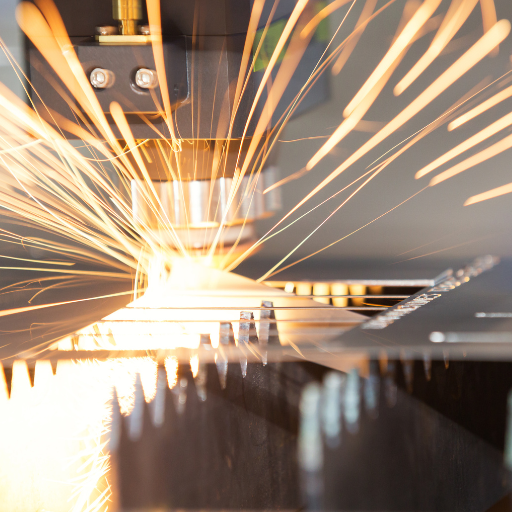
Sheet Metal Fabrication and Metal Bending
Metal Parts Manufacturing and Assembly
This manufacturing involves making metal parts and their assembly. A variety of crucial methods and processes that guarantee quality and precision are applied in the manufacture of metal parts. It is done through computerized numerical control (CNC) machining, welding among other advanced technologies. Every one of these techniques has a particular purpose such as molding, joining or dressing metals to specifics. By using automatic systems and robots, productivity is improved as well as consistency which enables mass production without any compromise on quality standards.
Moreover, metal parts manufacturing and assembly have some advantages like producing items that are strong and durable enough to withstand harsh conditions or stress occasions. These methods can be tailored for specific applications hence providing unique solutions applicable in various sectors such as automotive, aerospace, construction or consumer electronics; besides this firms can also achieve cost reduction by applying ISO 9000 certification principles in their operations resulting into overall effectiveness of the entire process through low material use.
To sum up on this matter it could be said that modern metallurgy ensures accuracy reliability efficiency thus securing their position in production sector of nowadays world industry.
Innovative Uses in Various Industries
How to Troubleshoot Common Issues in Metal Laser Cutting?
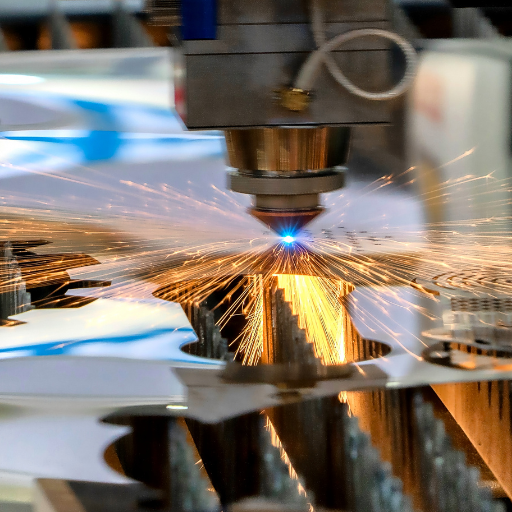
There are some problems in metal laser cutting that can affect the efficiency of this process. The following are a few common examples and their solutions:
- Poor Cut Quality:
- Possible Causes: Inappropriate focal height, lens condition degradation, inappropriate cutting speed.
- Solutions: Adjusting the focal height for an optimized laser impact on material surface, cleaning or replacing lenses for better visibility and fixing the right cutting speed according to thickness and type of materials.
- Incomplete Cuts:
- Possible Causes: Low Laser Power or misaligned nozzle.
- Solutions: Increasing laser power to fully penetrate materials and correcting nozzle alignment to ensure accurate focus of the beam.
- Burnt Edges:
- Possible Causes: Overpowered laser or slow cutting speed.
- Solutions: Laser power should be decreased while cutting speed increased so as to prevent excessive heat buildup resulting into burning at edge region s of the material.
- Excessive Dross Formation:
- Possible Causes: Gas pressure not set correctly or wrong cutting speed used.
- Solutions: Adjust assist gas pressure within the recommended range and optimize the cutting speed for minimum dross formation.
- Laser Not Cutting Through Material:
- Possible Causes: Underpowered Laser, dirty optics, wrong material settings.
- Solutions: Confirm that material parameters correspond with cut type and thickness, cleanse optics till their highest possible transmittance is reached and verify laser power settings.
Frequently Asked Questions (FAQs)
Q: What is sheet metal laser cutting?
A: Sheet metal laser cutting is a precise method of cutting metal materials using a high-powered laser. This technology is ideal for cutting various metal types, including thin sheet metal, with high accuracy and speed.
Q: How does laser-cut technology differ from other cutting technologies?
A: Laser-cut technology offers superior precision and cleaner cuts than traditional methods like plasma cutting or flame cutting. It is ideal for cutting complex shapes and intricate details in sheet metal parts with minimal deburring needed.
Q: What types of laser cutting technologies are available?
A: There are primarily two types of laser cutting technologies: CO2 and fiber lasers. CO2 lasers are effective for cutting materials like acrylic and mild steel, while fiber laser cutting is efficient for metal materials and is known for its longer service life.
Q: What materials can a sheet metal laser cutter handle?
A: A sheet metal laser cutter can handle various materials including metals like mild steel, stainless steel, and alloys, as well as acrylic and other non-metallic materials. The choice of material may affect the cutting speed and precision.
Q: What are the common applications of metal laser cutting services?
A: Metal laser cutting services are commonly used in industrial manufacturing for producing laser cut parts, enclosures, metal tube components, and custom designs. Industries such as automotive, aerospace, and electronics rely heavily on this technology.
Q: What is the advantage of using fiber laser cutting over CO2 lasers?
A: Fiber laser cutting offers several advantages including higher efficiency, faster cutting speeds, and the ability to cut reflective metals like aluminum and copper. Fiber lasers also generally have a longer service life compared to CO2 lasers.
Q: How does tube cutting with lasers work?
A: Tube cutting using a laser involves a specialized laser machine that can cut metal tubes with precision. This process is ideal for creating complex geometries and clean cuts in metal tubes, often used in structural and architectural applications.
Q: What factors influence the quality of laser-cut metal parts?
A: The quality of laser-cut metal parts is influenced by several factors including the type of laser used (CO2 or fiber), the laser power, the thickness of the material, the speed of cutting, and the quality of the CAD design used to guide the laser cutting process.
Q: Can laser cutting technology be used for creating prototypes?
A: Yes, laser cutting technology is ideal for creating prototypes. The precision and speed of laser machines allow for rapid prototyping of complex and detailed designs, making it a valuable tool in product development and testing phases.
Q: Is deburring necessary after cutting sheet metal with a laser?
A: Deburring may still be necessary after laser cutting sheet metal, especially for thicker materials or complex cuts. However, laser cutting generally produces cleaner edges compared to other cutting methods, reducing the amount of finishing work required.






